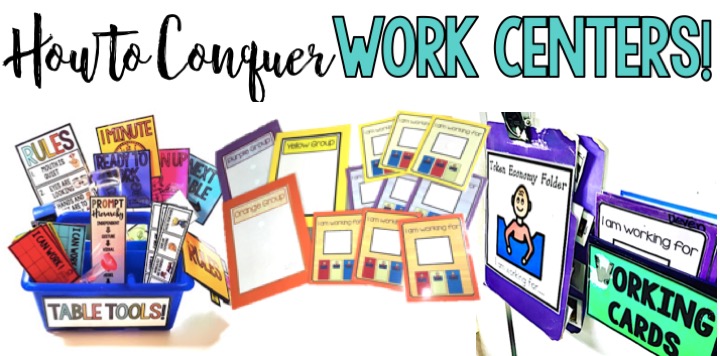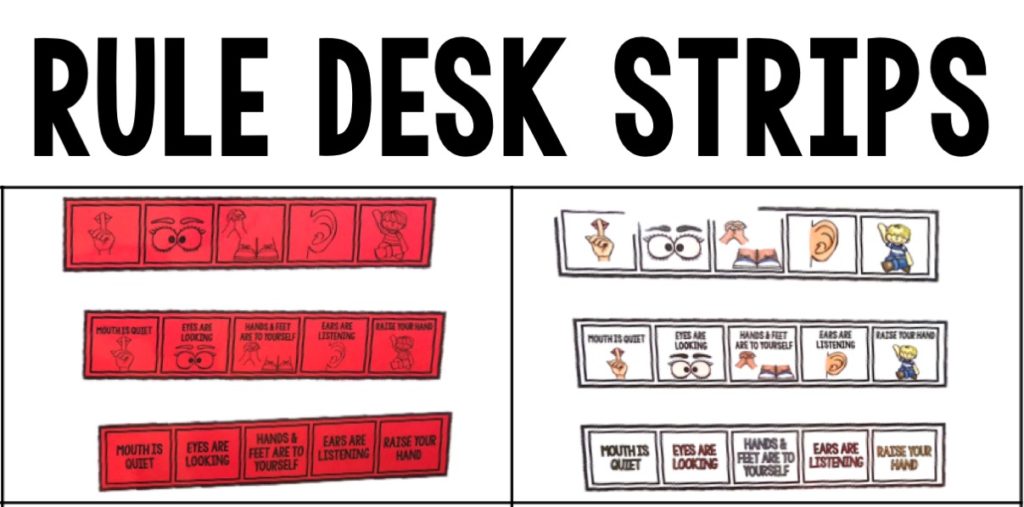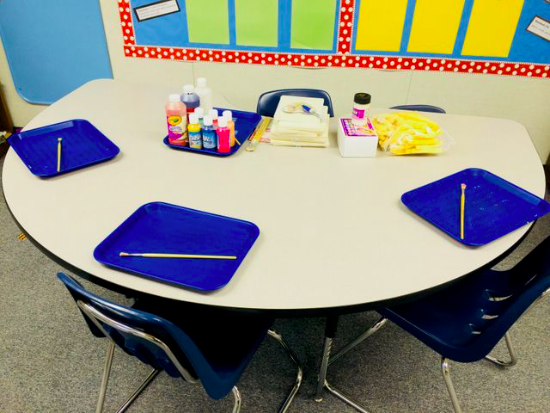How To Conquer Work Centers
Work centers can be such a hit or miss for teachers. So many times I hear these horrific stories about how chaos set out the second work centers begin. Well, let’s get to the route of the problem?
Do student’s know what’s expected of them during work centers?
Is your work center routine consistent?

It might sound like such a silly questions? And you are probably thinking “of course they know where to go.” But do they really? Do students know where to go and when to go without multiple verbal prompts? Think about it…if you have 10 students and only 2 of them independently transition without any verbal cues, that means you have 8 students that require at least one verbal direction. Do your aides chime in too? If so, that can be easily 20+ verbal commands of telling students within a minutes time. Even thinking about it overwhelms me! They can hear:
“go here”
or
“come here”
or
“Sit there”
or
“Switch with susie today.”
This can be EXTREMELY overwhelming for students and even staff too. If this process is not streamlined you are already setting students up for failure from the beginning. Students should be arriving to work centers calm and ready to work. Sometimes this requires some redirection to your staff as well. Staff may need some friendly reminders to cut the verbal reminders down to a simple gesture or cue as well as give the students a chance to be successful on their own. Now, of course, I know there will always be SOME students that require the extra help, whether its physical or verbal, and that is OKAY! But save those cues for the students that require them.
This is where I like to use visual work center rotation cards. The cards help act as a cue for students without ANY verbal redirection by staff. Each student has their own “working card” that has a color table schedule on the bottom. For example, below the student would go to the blue table first, then red, then yellow, than green. This work center card can be edited to create the colors you use in your classroom in addition to the number of tables you use! Take a look and you’ll see what I mean:
These can be taped on student desks or table spots so they cannot be removed.
These can be stored in your table tools caddy to pull out on an as needed basis.
Depending on your kiddos they may be a little chatty. Many times I visit a classroom to offer support for behaviors and one of the most obvious recommendations I make to the staff is to reduce verbal redirection. If a student is being loud, and 3 adults tell them to be quiet, the overall voice level of the classroom is too high and thus stimulating. I always try recommending using non verbal cues such as these voice level visuals to help prompt students to be quiet. Of course, some students will require a verbal prompt. However, not ALL students need to be “shhhh’d” 🙂
What is the realistic expectation for students? Do you token students individually? Do they earn clips at each center like my work center rotation system? If so, set expectations up from the beginning. My work centers always worked on the principal of first work, then play. Students would earn clips at each work center and turn it in for their preferred reward. Whatever method you choose, keep it consistent for your kiddos!
Work centers can be as effective as you want them to be. Are you going to do work centers daily? Are there going to be the same rotations? Are all students going to participate? In my opinion, work centers should be CONSISTENT daily. With work centers embedded into your daily schedule students will come to expect the rotations and will thrive on consistency. My philosophy on centers is that the ROUTINE should remain consistent every day. Students should be grouped and visit work centers in the SAME order EVERY day. With that said, your time may fluctuate depending on specials. Some days you may have PE or Library and this may cut your work centers short. No problem! Instead of 20 minute rotations, cut it down to 10 minute centers. Students will still have the same transitions but simpler or shorter work tasks at each center. This helps to build routine and consistent within your day. Students will THRIVE on routine.
Transitions should be smooth. Students should know when they are going to transition to the next table. Having a color coded card will help them know where to go, but knowing when is another thing! In my work center Table tools I include different visuals for students to help with transition. Visual cue sticks to help cue students to clean up, one more minute, next table and ready to work. These can reduce verbal cues during a hectic transition.
I was a fan of projecting a large timer on my white board so the entire class and all of the staff could see how much time was left!

































